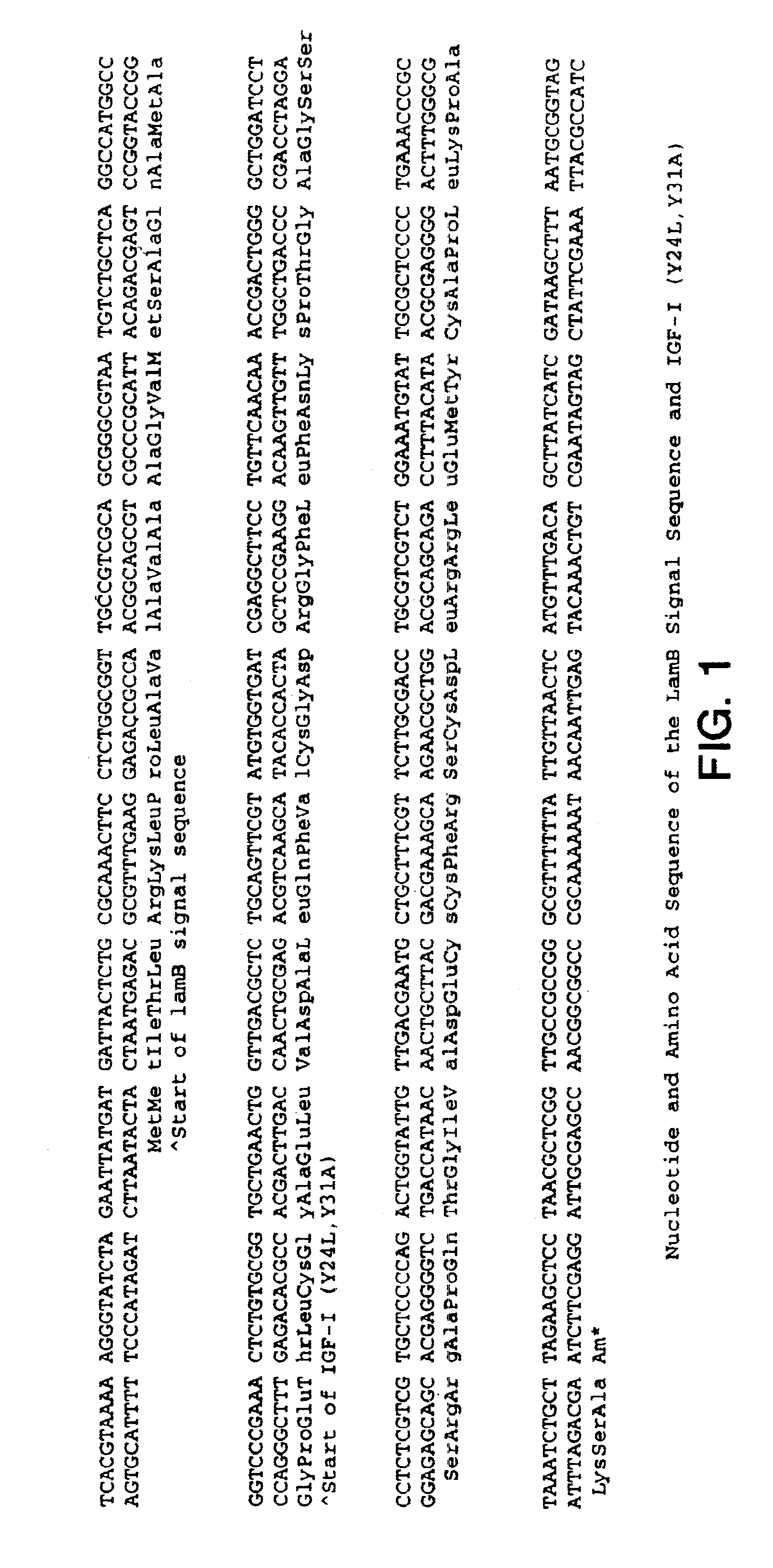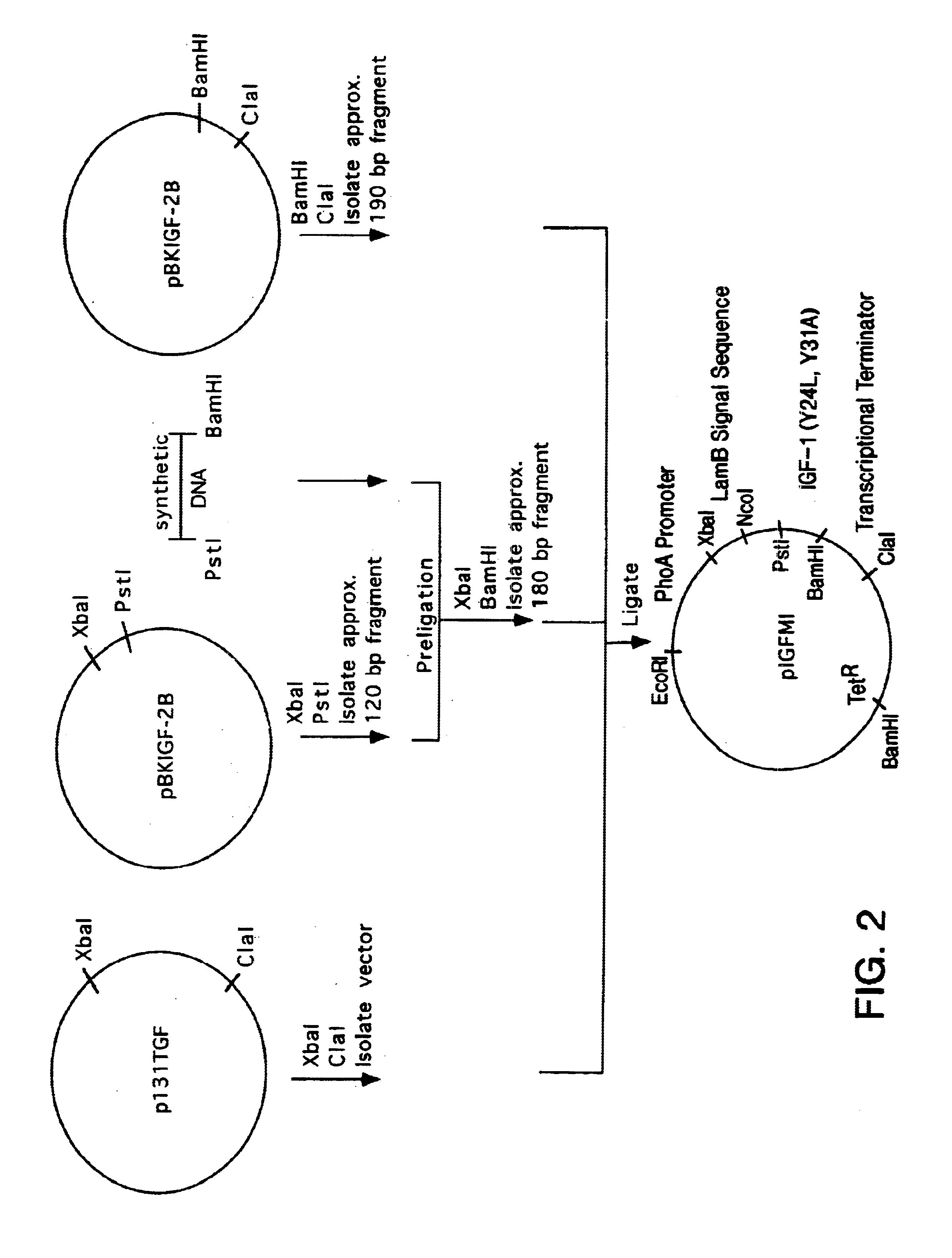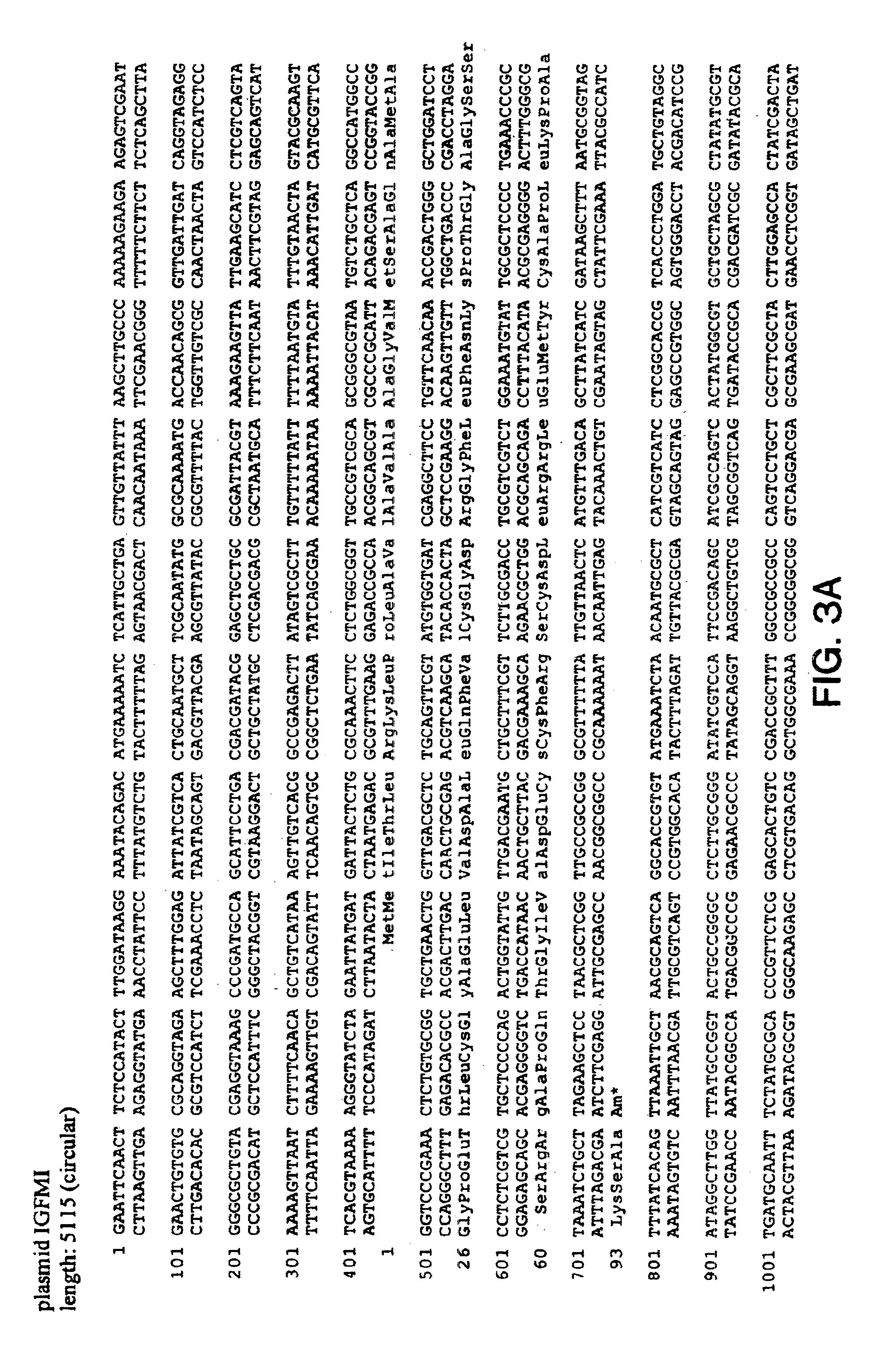Insulin-like growth factor agonist molecules
a growth factor and agonist technology, applied in the field of insulin-like growth factor agonist molecules, can solve the problems of high incidence of side effects, inability to conduct in vitro studies such uniform results, and lack of data on biological or efficacy responses
- Summary
- Abstract
- Description
- Claims
- Application Information
AI Technical Summary
Benefits of technology
Problems solved by technology
Method used
Image
Examples
example 1
In Vitro Activity of (Leu.sup.24,Ala.sup.31)hIGF-I
To test the direct activity of the IGF-I mutant on the IGF receptor, two different assays were employed. A third assay was used to determine if the mutant could displace IGF from IGFBPs in a competitive environment.
Assay 1: KIRA for Phosphorylation of the Human Type 1 Receptor
This assay is a direct activity assay for the human Type 1 receptor. When a receptor in the tyrosine kinase family, such as the Type 1 IGF receptor, is activated, it is phosphorylated on tyrosine residues. In this assay cells containing the Type 1 IGF receptor are activated in vitro, then disrupted, and antibodies against the receptor are used to precipitate the IGF receptor. Next, an anti-phosphotyrosine antibody is used to assay the amount of Type 1 IGF receptor that is phosphorylated. If a fixed number of cells is used, then the amount of receptor that is phosphorylated is a direct measure of the activity of a molecule on the Type 1 IGF receptor.
A KIRA for th...
example 2
In Vivo Activity of (Leu.sup.24.sub.1,Ala.sup.31)hIGF-I
Introduction
The mutant (Leu.sup.24,Ala.sup.31)hIGF-I tested in Example 1 in vitro was tested in vivo. Even though the mutant (Leu.sup.24,Ala.sup.31)hIGF-I was inactive in vitro, it was hypothesized that molecules of this class (molecules that are inactive directly on receptors, but capable of binding to IGFBPs) would show some activity in vivo. In the first studies (Leu.sup.24,Ala.sup.31)hIGF-I was given by IV injection to conscious rats and effects on glycemic control were determined.
Methods
Seven week old male Wistar rats (240-250 g, Charles Rivers Laboratories, Hollister, Calif.) were anesthetized with KETAMINE / XYLAZINE.TM. anesthesia and the right jugular vein was cannulated with a silicone rubber cannula that was developed for chronic blood sampling. Clark et al., J. Endocrinol., 111: 27-35 (1986). Following a two- to three-day recovery period, two basal blood samples were taken at -10 and -5 minutes, the test substances adm...
example 3
Injections of (Leu.sup.24,Ala.sup.31)hIGF-I Into Diabetic Rats
Introduction
In Example 2 the IGF-I mutant reduced insulin secretion and lowered blood glucose in normal non-diabetic rats. It was unclear if, in the diabetic state, manipulating the endogenous IGF system would lead to similar changes in glycemic control. Therefore, an animal model of Type II diabetes was also chosen to test the glycemic activity of the IGF-I mutant. The animal chosen, the Zucker Rat, is a well known model of obesity associated with diabetes in the rat. Stern et al., Proc. Soc. Exp. Biol. Med., 139: 66-69 (1972). A substrain of these rats, the Zucker Diabetic Fatty strain (ZDF), is a good model of Type II diabetes, since they become obese and insulin resistant at an early age, with progressive b-cell failure and then frank diabetes. Johnson et al., Science, 250: 546-549. (1990). It has been previously shown in ZDF rats that IGF-I administration can in the long term slow the onset and severity of Type II di...
PUM
| Property | Measurement | Unit |
|---|---|---|
| molecular weight | aaaaa | aaaaa |
| temperature | aaaaa | aaaaa |
| molecular weight | aaaaa | aaaaa |
Abstract
Description
Claims
Application Information
 Login to View More
Login to View More - R&D
- Intellectual Property
- Life Sciences
- Materials
- Tech Scout
- Unparalleled Data Quality
- Higher Quality Content
- 60% Fewer Hallucinations
Browse by: Latest US Patents, China's latest patents, Technical Efficacy Thesaurus, Application Domain, Technology Topic, Popular Technical Reports.
© 2025 PatSnap. All rights reserved.Legal|Privacy policy|Modern Slavery Act Transparency Statement|Sitemap|About US| Contact US: help@patsnap.com



